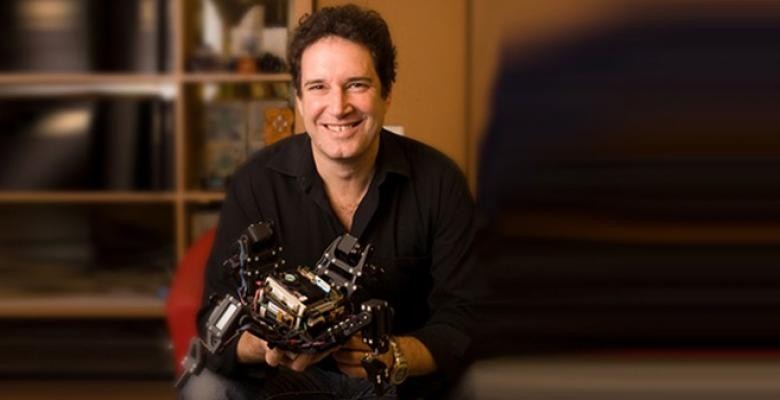Lipson, an expert in robotics who joined Columbia Engineering in 2013 and is a member of the Data Science Institute, predicts that what happens on the road will be only part of what could be one of the biggest technological revolutions since the internet.
“This is not just about having a taxicab without a driver, it’s really going to change the way we do everything,” he said. “This is an impending tsunami that’s going to sweep through the economy. It’s going to have a ripple effect on anything from ecommerce to real estate to jobs.”
Lipson’s specialty is artificial intelligence, or AI, which uses computer software to automate human-level intelligence, including such things as uncertainty, decision-making, perception and creativity. The team in his Creative Machines Lab designs and builds robots and automated systems that can paint original artwork, diagnose and treat diseased plants and may even have self-awareness and self-replicating capabilities.
“People thought computers can never be creative,” he said. “They can predict the stock market or give us a weather forecast, but people thought they can’t design, they can’t write music. I thought, let’s tackle this, this Holy Grail of creative machines.”
His lab, which he brought to Columbia from Cornell, has the motto “To build robots that do what you’d least expect robots to do.” Lipson’s 2007 TED Talk on building self-aware robots has had 1.2 million views, and he is a highly soughtafter speaker in academia and industry.
During a recent interview in his office in Mudd Hall, Lipson pointed to a robot on his desk that is shaped like a metal spider and about the size of a Chihuahua puppy. “It learned over a period of four days that it has legs,” he said. “We didn’t tell it this. It learned through experiences.”
That robot is one of several creative machines scattered around Lipson’s office, including one of the first designs, from 2002, for a multi-material, open source 3-D printer. There’s also a robot’s oil-on-canvas painting of Jimi Hendrix.
Lipson and his students draw on engineering, computer science, physics, math and biology to devise and explore machines that can create knowledge and are self-perceptive. In one experiment, Lipson and his team observed a robot in a playpen as it figured out that it had feet and then used them to walk and jump.
“The robot creates a model for itself,” Lipson said. “Right now it’s very primitive, but our goal is to make this increasingly more sophisticated.”
Last year, Lipson and his students developed a prototype of a 3-D food printer that uses computer-guided software to fabricate edible items. He and his team held workshops at the International Culinary Center in New York City, a culinary school, on how to create novel textures and spatial arrangements from basic ingredients that chefs cannot currently combine.
Current projects include a collaboration with the Cornell University College of Agriculture and Life Sciences to engineer drones that can scan miles of cornfields for diseased crops.
“You could have drones ‘walk’ the field every night, look at each leaf, spot disease earlier, have the ability to treat that one specific plant and collect data for farmers and breeders,” Lipson said. “The automated technology we’ve developed is going to disrupt the agriculture industry.”
The team’s paper on this research has been submitted to the journal Phytopathology for review. As with any new technology, Lipson notes, checks and balances are in order.
“This is a super powerful technology, and it has a life of its own,” he said. “Some are concerned that AI might eventually harm humans. But I think the more urgent question is not what AI will do to people, but what people will do to people using AI. We’re already seeing potential misuse in surveillance, censorship and drone policing. We’ll have to think carefully how we manage this double-edged sword.”
For Lipson, researching creative systems and thinking of new ways to advance AI is always on his mind—and it’s not always clear where his experiments and investigations will take him.
“We have end goals, but they are vague,” he admits. “We are sailing west, so to speak.”
